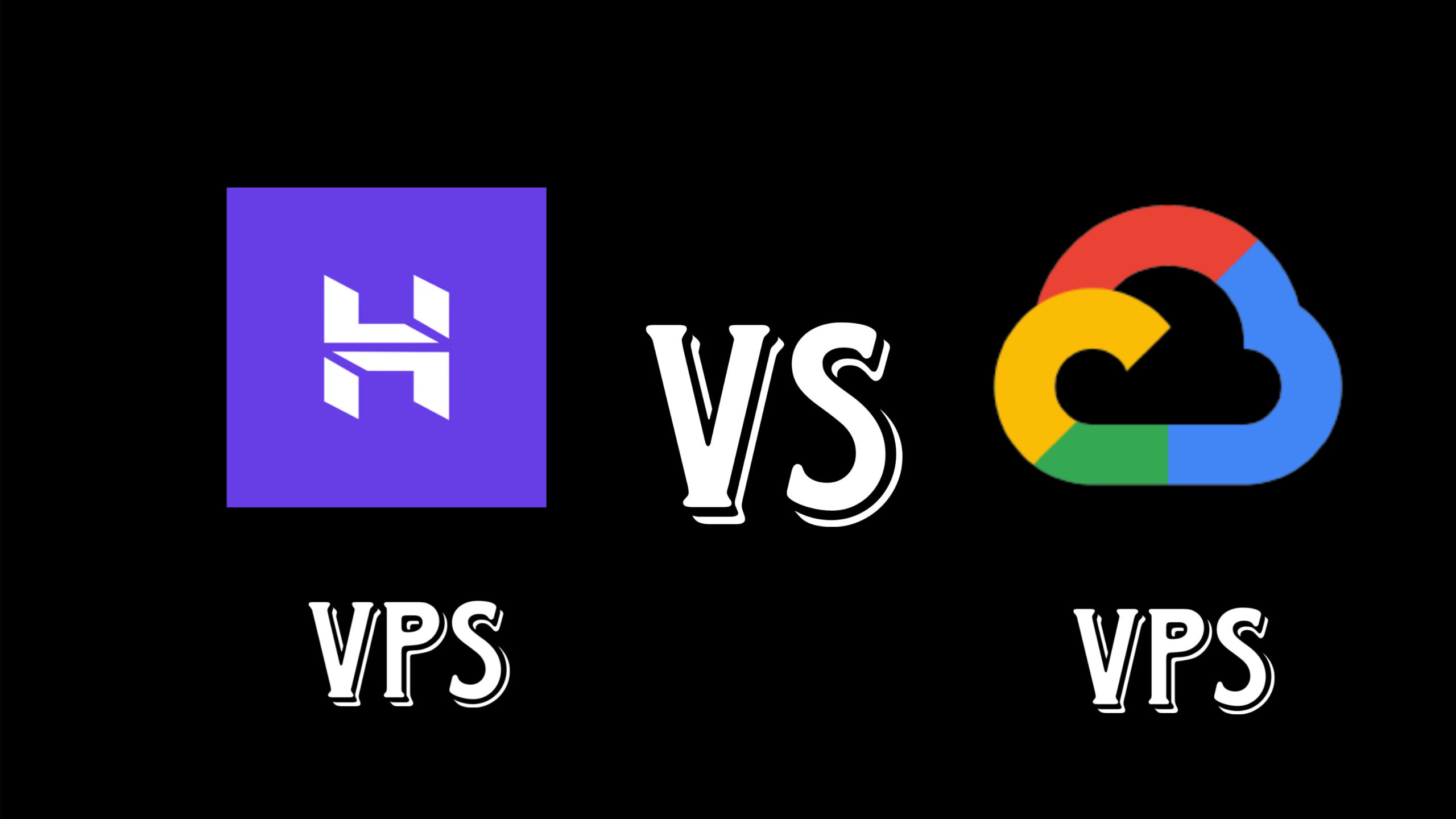Choosing the right hosting for your WordPress site is a crucial decision, especially when budget is a key concern. Both Hostinger VPS and Google Cloud VPS offer powerful solutions, but their approaches to pricing, performance, and ease of use differ significantly. Let’s dive into a detailed comparison to help you determine which VPS provider offers the most cost-effective solution for your WordPress needs.
Monthly Pricing Face-Off: Pennies vs. Potential
At first glance, Hostinger’s entry-level VPS (KVM1) appears incredibly budget-friendly, boasting 1 vCPU, 4 GB RAM, 50 GB NVMe SSD, and a generous 4 TB of bandwidth for around $4.99/month (with a 24-month prepayment). However, keep in mind that this is a promotional price, and the renewal rate jumps to $8.99/month.
Google Cloud Platform (Compute Engine), on the other hand, adopts a pay-as-you-go model, charging by the second without fixed plans. A comparable standard VM with 1 vCPU and 1 GB of RAM clocks in at roughly $21.68/month. Interestingly, Google also highlights WordPress hosting “starting at $13.17/month” on GCP, suggesting a very minimal configuration.
A significant advantage for Google Cloud is its Always Free tier, offering a free f1-micro/e2-micro VM (≈0.25 vCPU, 1 GB RAM) each month. This could be a game-changer for very small WordPress sites, potentially bringing your hosting costs down to zero. Hostinger doesn’t offer any free tier.
In practice: Small WordPress sites could potentially run for free or at a lower monthly cost on Google Cloud’s lower-end VMs, depending on their resource demands. Hostinger’s entry price is attractive, but the renewal and lack of a free tier need consideration.
Performance Benchmarks: Speed and Reliability
Both providers equip their VPS with modern hardware. Hostinger utilizes NVMe SSD storage and AMD EPYC CPUs, delivering strong WordPress performance. Independent tests, like those from Tom’s Hardware, have noted “good DB query and WordPress benchmark numbers” on Hostinger VPS. They also guarantee a 300 Mb/s network port per VPS, ensuring fast network throughput.
Google Compute Engine leverages Google’s custom infrastructure (Xeon or similar CPUs) and a global network backbone, emphasizing “improved performance” and “virtually limitless scalability.” Benchmarks generally indicate consistent CPU and disk I/O performance from Google’s VMs, while Hostinger can sometimes edge out in network speeds due to its dedicated port.
For small WordPress sites: Both platforms are likely to deliver satisfactory performance. Hostinger offers more RAM at its entry-level price point, while Google’s flexibility allows you to precisely tailor CPU and RAM allocation to your needs.
Ease of Setup and Management: Simplicity vs. Control
Hostinger VPS shines in its user-friendliness for WordPress setup. They provide VPS templates, including an Ubuntu 24.04 option with WordPress pre-installed. Post-provisioning, WordPress is ready to go, powered by CloudPanel and NGINX. Hostinger also offers 1-click installers for various control panels and applications. Management is handled through Hostinger’s intuitive hPanel, and you have the option to install cPanel, Plesk, or other panels (though cPanel incurs an extra cost). Setting up operating systems and control panels is designed to be done “in a few clicks” from the VPS dashboard. Essentially, Hostinger VPS offers a largely self-managed environment with convenient, user-friendly tools and templates.
GCP Compute Engine offers a “Click-to-deploy” WordPress image, which automatically sets up a VM, Cloud SQL database, and WordPress. However, beyond this initial setup, you’re responsible for configuring the VM yourself, including SSH management, OS updates, and installations (which can be automated via Deployment Manager or Cloud Shell). GCP doesn’t include a built-in control panel on its VMs, requiring users to navigate the Google Cloud Console or use SSH. While Google offers fully-managed alternatives like App Engine or Kubernetes, these come with increased complexity and cost. In summary, while Google provides a quick start for basic WordPress deployments, Hostinger’s VPS offers turnkey WordPress templates and an integrated control panel for easier ongoing management.
Scalability and Growth: Adapting to Your Audience
Hostinger VPS allows you to scale up by upgrading your current plan. Their interface makes it easy to “start small and scale when you outgrow your plan” with a few clicks. However, you’re limited to their predefined tiers (up to 8 vCPU/32 GB on their top-tier KVM8 plan), and adding resources often involves downtime during migration.
GCP, on the other hand, boasts inherent elasticity. You can resize or add VMs on demand, leverage managed instance groups with auto-scaling, or transition to more advanced services like Google Kubernetes Engine or Cloud SQL. Google emphasizes “virtually limitless scalability” on its platform. For a WordPress site experiencing growth, GCP’s ability to easily add CPUs, memory, and even implement global load balancers presents a significant advantage. Hostinger’s fixed tiers and geographical locations might necessitate manual migration to multiple instances or higher plans for very high traffic scenarios.
Features and Support: What Else Do You Get?
Backups:
- Hostinger: Includes automated weekly backups for its VPS and allows you to create manual snapshots, with restores managed through their panel.
- GCP Compute Engine: Does not offer automatic VM backups by default. You need to manually configure snapshot schedules for persistent disks or utilize Cloud Backup.
Control Panel:
- Hostinger: Provides its custom hPanel and supports cPanel/Plesk (cPanel as a paid add-on).
- GCP: Offers no web-based control panel on its VMs, with management primarily through the Google Cloud Console and gcloud CLI.
Managed WordPress Tools:
- Hostinger: Offers separate Managed WordPress plans with WP-specific optimizations, but these are distinct from their VPS offerings. On Hostinger VPS, you manage WordPress yourself.
- GCP: Doesn’t have a dedicated WordPress service, with users typically relying on Compute Engine combined with Cloud SQL or using Bitnami/GCP Marketplace images for WordPress.
Support:
- Hostinger: Provides 24/7 support via live chat (no phone support), along with a knowledge base and ticket system. Reviews often commend Hostinger’s support responsiveness, although documentation might have limitations.
- GCP: Offers basic support (documentation, community forums, and billing assistance) for free. For SLA-backed technical support, you need to purchase a support plan, with Standard Support starting at $29/month or approximately 3% of your usage. This can add a significant cost for budget-conscious users requiring more dedicated support.
Hidden Costs and Fees: Reading the Fine Print
Hostinger:
While many costs are transparent, be aware of renewal prices, which can be notably higher than the initial promotional rates. Domains are not included with their VPS by default. A significant potential cost is the cPanel license, which costs an additional $23/month. Hostinger does not charge bandwidth overage fees up to the plan limit. Backups and snapshots are included. Extra costs primarily arise from plan upgrades, license add-ons (like cPanel), and the higher renewal rates.
Google Cloud:
Costs on GCP can be more challenging to predict. Network egress (data transfer out of your VM) is a common hidden expense, with charges around $0.12/GB after the initial 1 GB free tier. Similarly, reserving static IPs, taking snapshots, or using Cloud SQL backups incur storage charges. As mentioned earlier, Google’s support fees can also be substantial for smaller businesses. Unlike Hostinger’s flat-rate plans, GCP charges for CPU time by the second, meaning idle VMs or misconfigured workloads can still accrue costs. It’s crucial to utilize the Google Cloud Pricing Calculator diligently. In practice, keep a close eye on bandwidth and storage costs on GCP.
Conclusion: Tailoring Your Choice to Your Needs
Choosing between Hostinger VPS and Google Cloud VPS for your WordPress site hinges on your specific requirements, technical expertise, and budget constraints.
Hostinger VPS emerges as a potentially more cost-effective option for users seeking:
- Lower entry-level pricing (especially with a long-term commitment).
- Simplified WordPress setup with pre-installed templates.
- An easy-to-use control panel (hPanel) for management.
- Included automated backups and snapshots.
- Responsive 24/7 live chat support.
However, be mindful of the higher renewal rates and the additional cost of a cPanel license if you prefer that control panel. Scalability is present but limited to their predefined tiers, and significant growth might require more complex manual migrations.
Google Cloud VPS (Compute Engine) might be a better fit for users who prioritize:
- Ultimate scalability and flexibility to adapt to fluctuating traffic demands.
- The potential for a free tier for very small WordPress sites.
- Granular control over resources and the ability to right-size VMs precisely.
- Robust performance and a global infrastructure.
However, be prepared for a potentially steeper learning curve, the need for more hands-on server management, and the potential for unpredictable costs related to network egress, storage, and support if you require it.
Ultimately, cost-effectiveness isn’t just about the initial monthly price. Consider the long-term costs, the value of included features, the ease of management for your skill level, and the potential for scalability as your WordPress site grows. Carefully weigh these factors against your specific needs to make the most informed and cost-effective decision.



